Numerous captivating historical artifacts have emerged from the Stone Age. One of the latest discoveries dating back to the fascinating period is believed to represent one of the oldest and largest known man-made hunting structures in Europe and was unveiled from the depth of the sea.
Scientists have recently found structures from the Stone Age that can provide unique insights into Late Glacial and Mesolithic cultures around the Baltic Sea. Identified as a “megastructure,” researchers claim it has been preserved underwater in the Western Baltic Sea.
Named Blinkerwall, the structure was likely constructed by hunter-gatherer groups more than 10,000 years ago and ultimately drowned during the Littorina transgression 85,00 years ago.
The Littorina transgression refers to a period of rising sea levels during the Holocene epoch, specifically around 8,500 years ago.
Since then, Blinkerwall remained hidden at the seafloor, leading to a pristine preservation that has offered a unique opportunity for research into the lifestyles and territorial evolution of the broader region.
Scientists recently discovered the “Blinkerwall” in the Baltic Sea, likely one of the oldest documented man-made structures of its kind
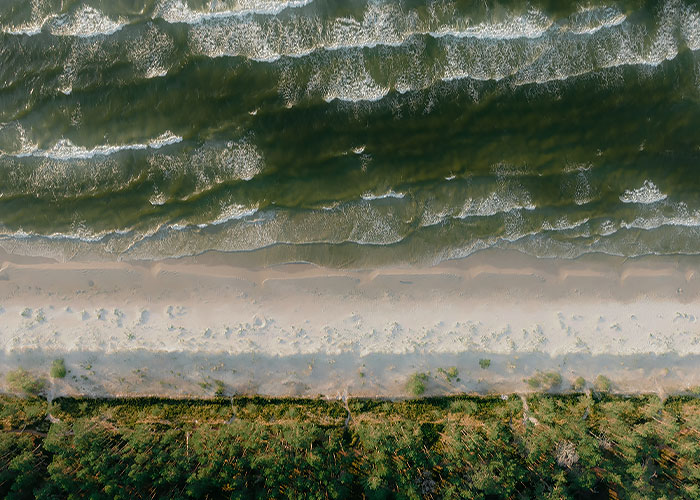
The scientists, who published their findings in the peer-reviewed journal PNAS on Monday (February 12), outlined a man-made structure composed of 1,673 individual stones, each typically less than one meter in height.
Researchers suggested that the stones, which were arranged side by side and spanned a distance of 971 meters, were likely deliberately placed by humans and not naturally processed to form the observed pattern.
Blinkerwall was found 21 meters below the surface in the southwestern part of the Baltic Sea, off the coast of Germany
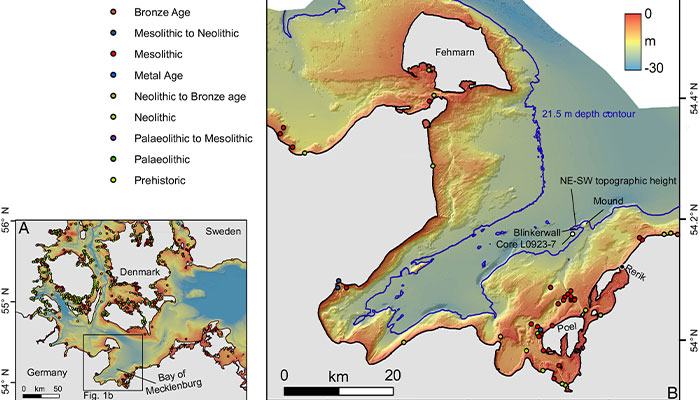
Blinkerwall, situated alongside the submerged shoreline of a prehistoric lake or a supposed bog, probably served as a hunting structure for the Eurasian reindeer during the Younger Dryas or early Pre-Boreal periods, the scientists proposed.
“Based on the information at hand, the most plausible functional interpretation for the Blinkerwall is that it was constructed and used as a hunting architecture for driving herds of large ungulates,” the scientists wrote in their paper.
The Younger Dryas and early Pre-Boreal are geological periods within the Holocene epoch. The Younger Dryas occurred approximately 12,900 to 11,700 years ago and was marked by a sudden return to glacial conditions after a period of warming following the last glacial maximum.
The early Pre-Boreal followed the Younger Dryas, approximately 11,700 to 10,500 years ago, and it marked the transition to warmer, more stable climatic conditions.
The Littorina transgression refers to a period of rising sea levels during the Holocene epoch, specifically around 8,500 years ago
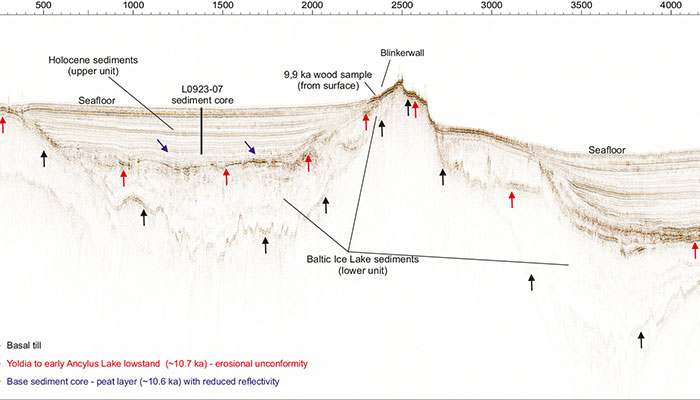
“If the Blinkerwall served as a driving lane for the reindeer hunt, the terminus ante quem for its construction is the Pre-Boreal or late glacial period,” the scientists explained.
They continued: “This puts the Blinkerwall into [the] range of the oldest known examples of hunting architecture in the world and potentially makes it the oldest man-made megastructure in Europe.”
The location where Blinkerwall was found was described as being a complex seafloor formation influenced by geological, biological, and human factors. Despite the variety of seafloor shapes, the researchers’ understanding was limited by the difficulty of direct observation.
The Blinkerwall is believed to have been constructed by hunter-gatherer groups more than 10,000 years ago during the Stone Age
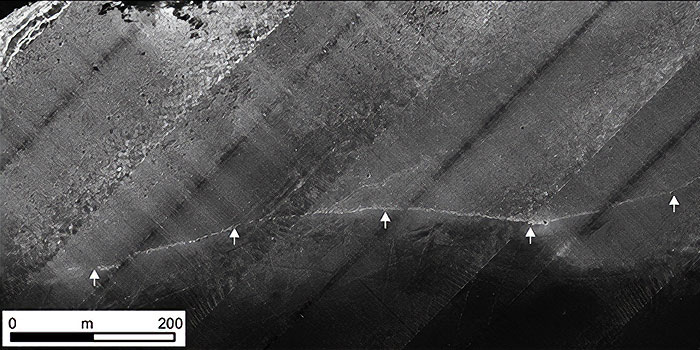
To overcome the challenge, cutting-edge hydrographic and geophysical tools, along with archaeological diving techniques, were employed to investigate Blinkerwall, which was, at first, observed as a significant morphological feature composed of the aligned stones discovered in the Baltic Sea at a depth of approximately 21 meters, located in the Bay of Mecklenburg, Germany.
The Bay of Mecklenburg was primarily shaped by the Weichselian glaciation and the subsequent sea-level changes during the Holocene epoch.
The Weichselian glaciation, also known as the Last Glacial Maximum, was the most recent glacial period in Northern Europe, occurring approximately 20,000 to 18,000 years ago.
The region is well known for its high density of submerged archeological sites, authors noted in their paper. 23 submerged sites dating from 8500 to 5000 years ago were uncovered there, providing insights into continued settlement activities and societal resilience.
Researchers found it was made of 1,673 stones, each less than a meter in height, arranged deliberately over 971 meters
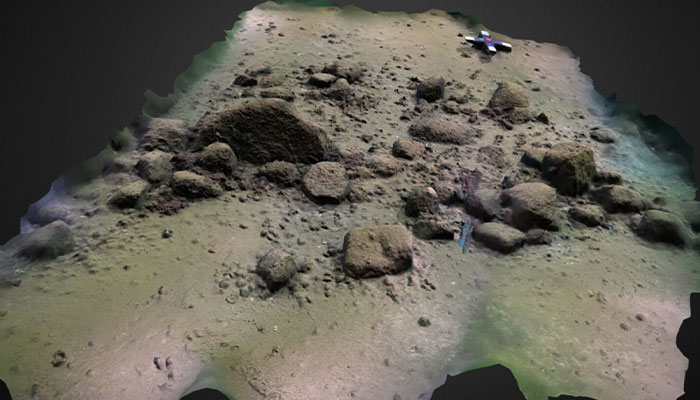
Despite previous research efforts, Blinkerwall was only identified in September 2021 using high-resolution shipborne multibeam echosounder data. The findings marked a significant advancement in understanding the seafloor morphology of the Bay of Mecklenburg.
“The Blinkerwall represents an exceptional morphologic feature, which has not yet been documented elsewhere in the Baltic Sea,” the authors noted.
In Europe, there is a wide absence of similar-sized Stone Age megastructures like the Blinkerwall, partially caused by preservation issues on the densely populated subcontinent, where similar structures may have been obscured or destroyed over time.
Its construction likely predates the Littorina transgression
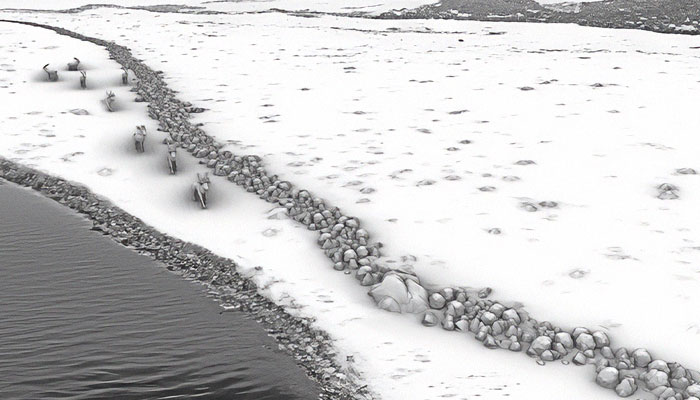
“The suggested date and functional interpretation of the Blinkerwall make the feature a thrilling discovery, not only because of its age but also because of the potential for understanding subsistence patterns of the early hunter-gatherer communities,” the scientists highlighted.
The authors echoed Anthropology Professor Ashley Lemke’s observation that “permanent hunting structures anchor [the foragers] to certain places on the landscape and create sociopolitical and economic tensions concerning ownership, territoriality, leadership, labor aggregation, group size, and other social dynamics.”
As a result, a discovery of this kind of structure, the scientists wrote, sheds light on many aspects of the regional hunter-gatherers, especially regarding their socioeconomic complexity.
“History just keeps getting older,” a reader quipped














